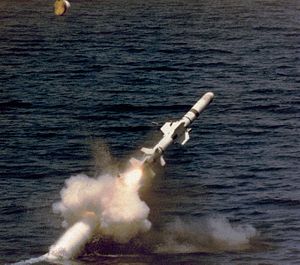The U.S. Navy is looking into developing a submarine-launched hypersonic missile as part of its conventional prompt global strike (CPGS) program.
According to an Inside Defense article, the Navy’s Strategic Systems Programs office is soliciting proposals for “two-year industry trade studies to flesh out technology options and architecture for an intermediate-range conventional prompt global strike weapon.”
The report said that the competition was part of the Defense Department’s “fiscal year 2014 plan to investigate a launcher, missile and glide body for a weapon with potential game-changing capabilities.” Top among these CPGS capabilities is to develop precision-guided ballistic missiles that can reach any point on the globe within an hour’s time.
Inside Defense went on to say that the Navy’s Strategic Systems Programs office was interested in awarding one or two thirteen-month contracts, each of which would be worth $5 million and be eligible for a one year extension. The statement announcing the competition did caution that: “The industrial effort in this procurement is not intended to be a system-level development of a specific CPGS solution; instead, it is a technical trade study to evaluate technology options and compare the performance and technology cost considerations of these options.”
Although pursuing submarine-launched missiles instead of ground-based ones increases the technical challenges involved, the decision is necessary in light of the United States’ treaty obligations which ban it and Russia from developing ground-launched intermediate missiles with a range of 500-5,500 km. Recent reports, however, suggest that Russia may have recently violated the Intermediate-Range Nuclear Forces Treaty (which also bans conventional missiles), opening up the future possibility of the U.S. developing intermediate-range ground-based missiles as part of its CPGS program.
Some analysts believe there is a nascent hypersonic missile arms race between some of the world’s major powers. The Navy’s competition announcement comes on the heels of China testing its own hypersonic missile vehicle. As my colleague Ankit reported last month, “The hypersonic missile [test] could be a major milestone for China as it modernizes its military technology for strategic nuclear and conventional military purposes.” Ankit, citing Project 2049’s Mark Stokes, went on to note that China is believed to be “working on two such hypersonic flight vehicle programs, both intended for long-range strategic use.” Additionally, Beijing is also believed to be pursuing an independent hypersonic capability, as opposed to one that takes off from China’s intercontinental ballistic missiles (ICBMs).
Besides China, Russia and India are also jointly developing a hypersonic missile capability.
Hypersonic missiles are technically defined as those that travel between speeds of Mach 5 and Mach 10 (3,840 miles per hour and 7,680 miles per hour.) They also travel at lower altitudes than existing ballistic missiles, making them impervious to current missile defense technologies.

































